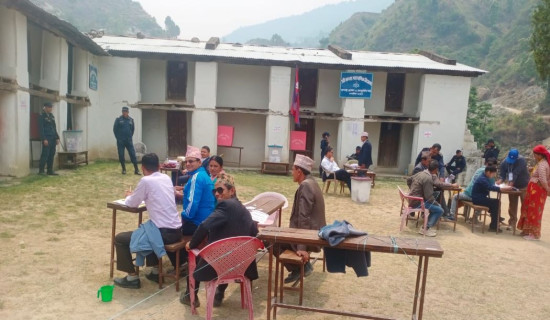- Saturday, 27 April 2024
Bright Economic Outlook
The indicators of the external sector of the Nepali economy have been on improving streak, according to the latest current macroeconomic and financial situation report of the Nepal Rastra Bank (NRB). The remittance inflow has soared by 21.6 per cent to Rs. 839 billion in the review period of first seven months of the current fiscal year 2023/24. Foreign currency reserves increased by about Rs. 28.37 billion during a single month from mid-January to mid-February 2024. But the export has remained low while the FDI has slightly improved. The foreign exchange reserves are sufficient to cover the prospective merchandise imports of 14.7 months, and merchandise and services imports of 12.3 months. Four sectors – export, foreign direct investment (FDI), foreign aid and tourism – continue to be our major foreign currency earners.
What's more, there has been further improvement in the current account and Balance of Payment (BoP), which remained at a surplus of Rs. 297.72 billion in the review period against a surplus of Rs. 128.55 billion in the same period of the year before. Similarly, the current account remained at a surplus of Rs. 161.69 billion against a deficit of Rs. 40.16 billion. To sweeten the matter, net FDI jumped to Rs. 5.18 billion from Rs. 1.04 billion.
There is more good news. To a slight relief of the people, runaway consumer price inflation (CPI) that eats into people's earnings and shrinks the purchasing power of the currency, has cooled somewhat. The y-o-y CPI moderated to 5.01 per cent in mid-February 2024 compared to 7.88 per cent a year ago. Food and beverage category inflation stood at 6.51 per cent whereas non-food and service category inflation stood at 3.85 percent in the review period. That figure for transportation sub-category decreased by 1.41 per cent. Likewise, wholesale price inflation plunged to 2.82 per cent from 9.67 per cent. As for wholesale price index of construction materials, it decreased by 5.32 per cent. And, salary index and wage rate index increased by 1.05 and 6.92 per cent respectively.
To be sure, though these indicators are encouraging, they don't tell the whole story. Experts opine that the economy is still not out of woods. With crucial sectors such as construction still languishing in the doldrums, much needs to be done to spur economic growth that sustainably lifts people out of poverty or create jobs that pay enough to lead a decent life and provide for the family. The government needs to step in and ramp up its capital expenditure so that the sector gets a lifeline to roar back to life. For lack of budget, our roads aren't getting much-needed fund to get repaired or upgraded, tuning into death traps, government hospitals have been unable to revamp their amenities, among other problems.
There's one more major issue to be addressed: remittance piling up in banks. Many businesses complain that, despite burgeoning remittance, general people have little or no money to make purchases of goods. Low demand for goods has caused our factories to run below capacity or to stay out of business altogether. This has exacerbated already-low employment problem. As well as being used for investment, remittance should boost consumption. If needed, new monetary policy should be put in place to put remittance into better use.

















